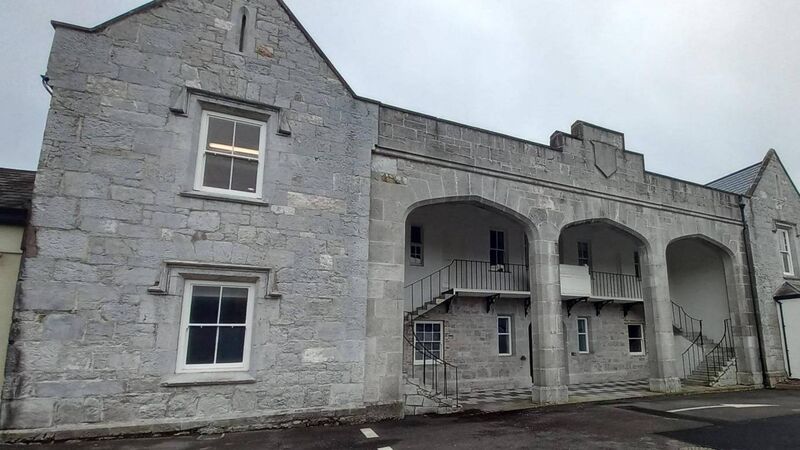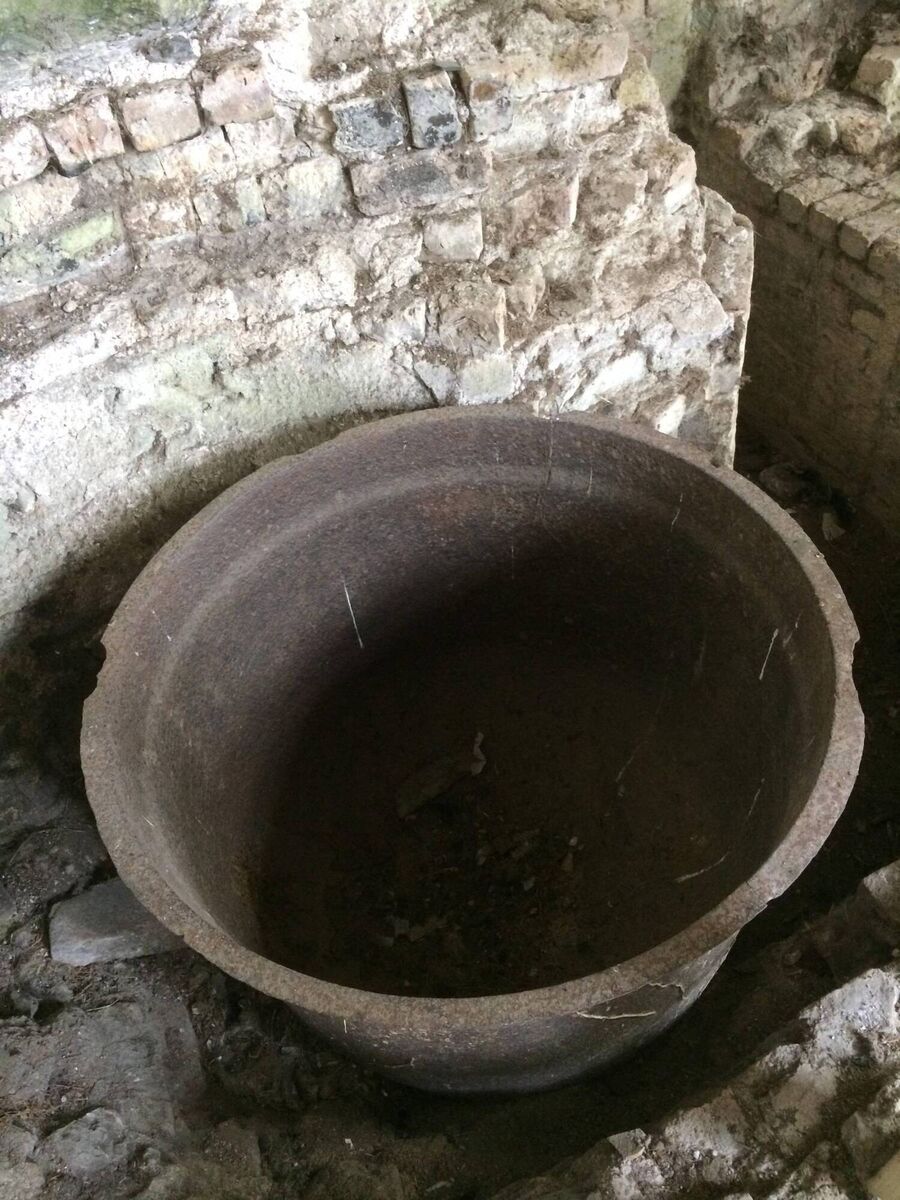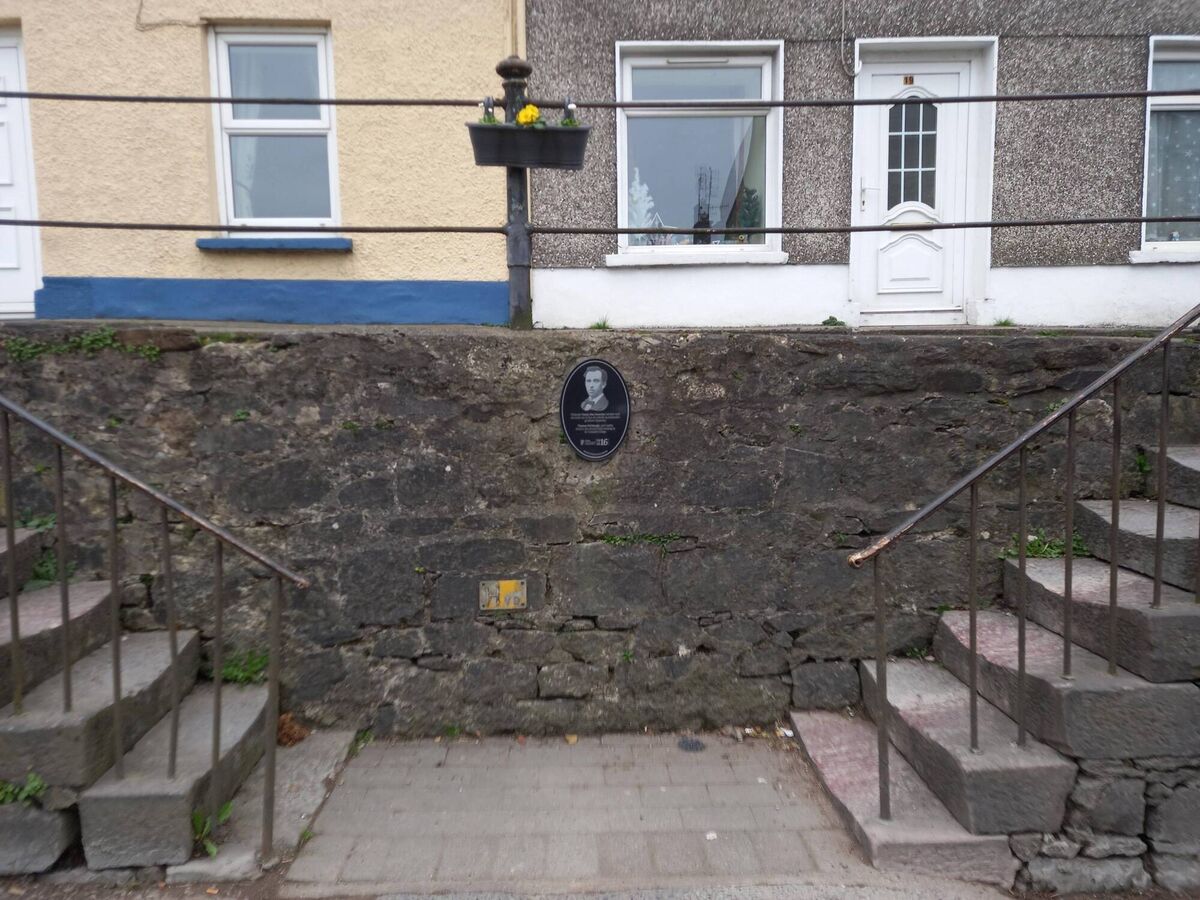Reminders of Famine in Cork still visible 180 years later

The workhouse administration building still standing on the grounds of St Finbarr’s hospital in Cork city.
The Famine walls and piers around Cork provide ghostly reminders of a heart-breaking past.
An Gorta Mór, the Irish Famine, is an indelible part of the Irish psyche. Starting 180 years ago next year, in 1845, and lasting for five years, it is the single most horrific time in our history that still brings a shiver and a tear to those who read about, or document, these dark days.
All over northern and western Europe, the potato blight ravaged communities as the crop represented their staple food source.
Ireland, however, bore the brunt of this famine, and to this day the effects are to be seen in our mindset, our collective history, and our continuing kindness and charity to others in need.
The statistics of that time make harrowing reading, with more than a million dead, almost two million emigrating, and those that remained suffering untold hardship for years.
The British response was minimal as best, and to this day it is still almost impossible to fathom. At the time, the penal laws meant that no Roman Catholic could own or lease land, and the ‘Irish representatives’ in the British parliament were of British decent and mostly landlords themselves.
The potato and been introduced to Ireland only 100 years previous and had become the main source of food for the poor. The first year of the Famine, 1845, saw half of the crop infected with the fungus phytophthora infestans, and the following year three-quarters of the crop were destroyed.
However, not all were affected,
According to a report in The Cork Examiner in 1846, at the Baltimore Regatta the rank and fashion far exceeded any former occasion.
The reporter, Jeramiah O’Callaghan, informed readers that he searched for the poverty-stricken serfs who had been ordered to remain out of sight lest they upset the upper-class visitors from the yacht club.
He said: “I shuddered to see 200 human beings in so deplorable a condition.”
O’Callaghan writes about the revellers at the Youghal Regatta where all manner of boat vied for the prizes, while the elite of society danced and supped until dawn. The wines were excellent, and the tables were crowded with every luxury the season could afford.

It is a difficult read, to say the least.
In 1847, the Quakers, or The Society of Friends, and the government set up soup kitchens. By August they were feeding three million people every day.
The people of Cork county were flooding to the city in search of food and care, so the numbers seeking aid were ever increasing, and there was food stealing and riots. The people were described by the Cork Constitution as “walking masses of filth, vermin and sickness”.
With the potato crop lost, the price of all other food stuffs skyrocketed. All the while, shipments of grain and livestock were being exported to the UK.
Reports of the sick and dying lying in roofless hovels are plentiful. There were stories of wild dogs feasting on the remains of the dead in ditches.
People made their way to cemeteries as they know they were about to die, and masses of these walking dead thronged along the roads, ghostly skeletal souls aimlessly moving in search of a miracle.
The county of Cork saw its population in the decade between 1841 and 1851 decrease by 24%.
The workhouses, which were a place of last resort, were overwhelmed.
The construction of these had begun in 1839, in response to the poverty among the poor. The country’s population had more than doubled between 1800 and 1840, mostly in parts of rural Ireland, and poverty was rife.
There were 163 workhouses operating in Ireland until the 1920s. The first 130 were built before 1850, and the second phase of 33 were brought into service after An Gorta Mór.
These stone buildings were built all over Ireland as a response to the growing issue of hunger and destitution, funded by the ratepayers of the district.
Until the famine years, it was considered shameful to end up in a workhouse, but as people got desperate, they found themselves at the doors of these overcrowded places.
Not everyone gained entry. If you were turned away, you were left to your own devices. If you did manage to enter the workhouse, you had to bring your whole family with you. Families were segregated on entry. Husbands, wives, and children were kept apart for the duration of their stay. Boys over the age of 15 were considered men.
Newborns were brought to their mothers just for feeding, and removed again immediately.
Life expectancy in these places was short, as many died of disease, including dysentery. A report for the Dunmanway workhouse, one of 11 in Cork, says it was built for 400 inmates, and saw its numbers more than double to 866. A fever hospital was erected, but people were dying at a rate of 70 per week. This number would have been much higher if it wasn’t for the local landlord, unlike many other landlords, not evading the payment of poor relief.
Death rates in one of the biggest workhouses, Skibbereen, were unprecedented, with 266 dying between October 10, 1846, and January 7, 1847. In the week ending March 27, 1847, 106 deaths were recorded.
When I visited the well-preserved workhouse at Portumna in Galway, the guide told me the windows were high so that mothers wouldn’t be able to see their children in the yard. They lived in utter distress.
Eventually, famine relief works were set up in the south and west of the country. These schemes were set up to offer work to the poor in exchange for food or money. Many involved the building of roads, wall, and piers. Some of the walls seen today in place like Clare and Galway are a testament to these schemes. They were built using the stones and rocks that were removed from the land.
Many of the piers we have today around West Cork are remnants of the famine work relief schemes. Some of the roads built go on for miles, with neither point nor destination.
In the city, men were employed to build quays and do repair work to the marina wall.

One of the most recognisable remnants of the Famine in Cork is the wall in Fermoy, where each stone was lifted by hand by those barely strong enough to stand. The steps are surprisingly high, and the fine workmanship, even by those suffering near-starvation, is evident as these walls still stand today as a reminder of our past. A grey, and sad, yet solid and undisputed testament to one of the darkest times in our nation’s history.
In Cork, the population in the 1831 Cork Poor Law union census was 158,339, covering 223 square miles. This was overseen by a Board of Guardians that met once a week to discuss the administration of aid and the work schemes.
The workhouse had accommodated 2,000 inmates in 1841, but by the autumn of 1846 that number had almost doubled.
The cemetery at St Joseph’s couldn’t cope with the growing numbers of dead so a new burial ground was opened at Carrs Hill. George Carr applied to open a workhouse graveyard on the three-acre site. He also got the contract for burying the dead.
An article in the Cork Constitution tells of dogs digging up bodies and a foul stench emanating from the site.

Locals reported bodies half buried and coffins lining the street waiting days for burial. Carr was fined £300 but told that he didn’t have to pay if the situation was rectified. It is reported that after the Famine Carrs Hill cemetery was used for paupers’ burials, and the burials of still-born babies.
A 54ft steel cross, built by taxi driver Jack Sorenson in the 1950s, on the site today is a reminder and a memorial to the countless souls buried there. It was funded by himself and by donations from friends.
Today, the workhouse administration building still stands on the grounds of St Finbarr’s Hospital, along with other buildings as testament to the past. It has been refurbished and is now known as the ‘Union House’.

Just outside Macroom town is a mass grave from the local workhouse. Carrigastyra was used as the burial ground of the workhouse on the six acres where the hospital now stands. On the site, within tall trees, is a prayer room and a seating area for contemplation and reflection.
All around us are reminders of this painful and tragic past of our island history. Whether it’s the walk from Tracton re-enacted every year, the marina wall, the piers dotted around West Cork, the long walls that ran from the bottom of mountains to the tops, the Fermoy wall, the remnants of the workhouses, or the many mass graves in almost every town in our county.
An Gorta Mór, no longer in living memory, must be consigned to history, but let us carry it always as a reminder to never forget.






 App?
App?





